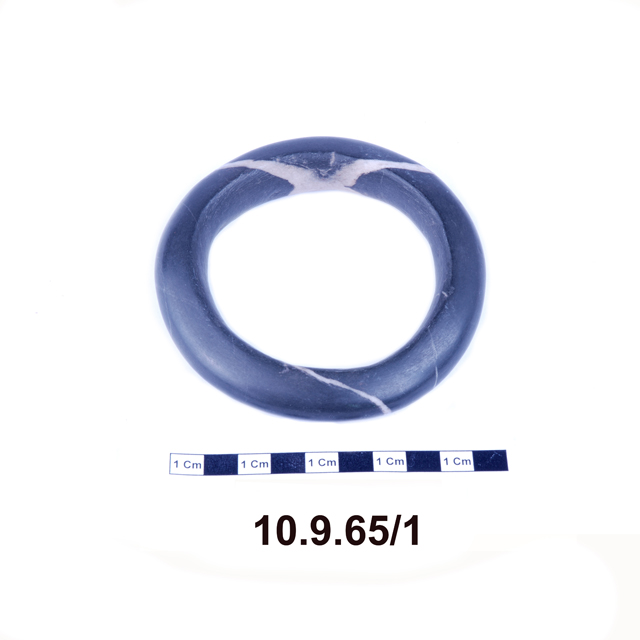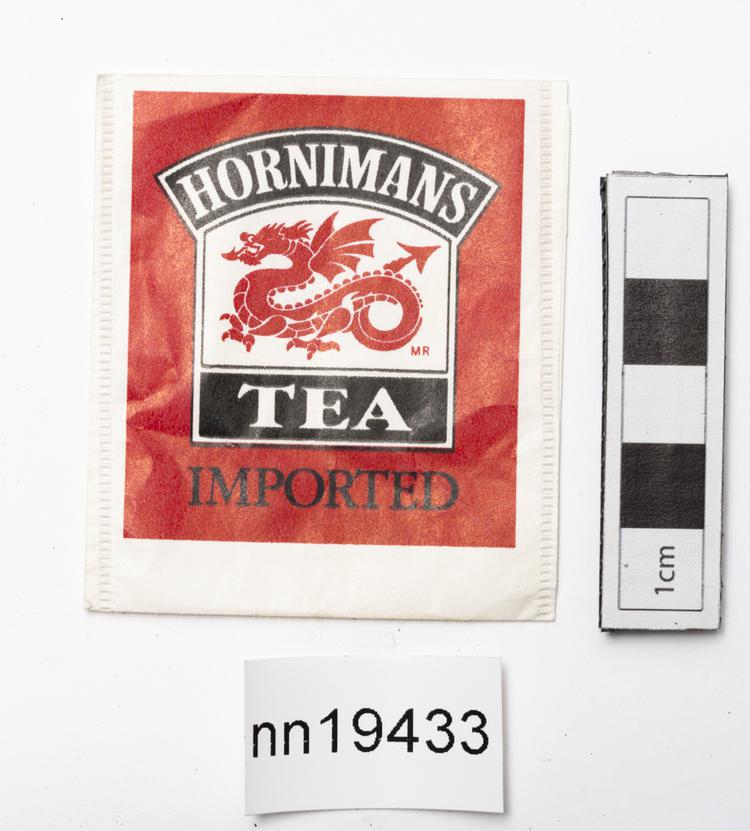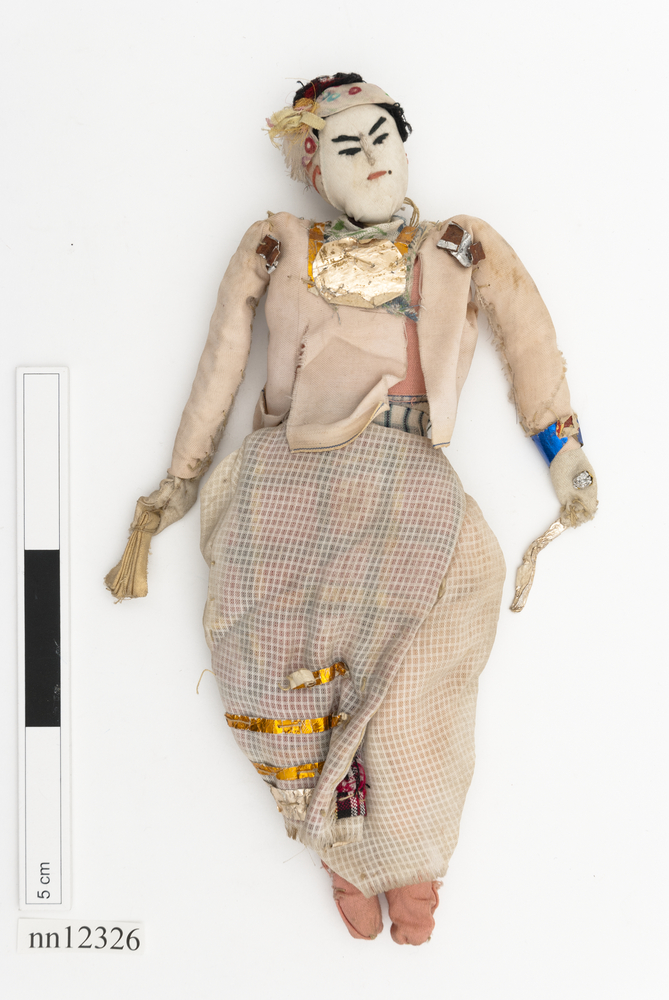
Stone armlet, carved from dark (or black) limestone with white veins.
This looks like a Tuareg man’s armlet, which would have been worn on the upper arm, just above the elbow. Ursel Widemann's only reservation is that the internal diameter is only 76.2mm, which seems quite narrow for an upper arm armlet, but it may have suited a slim man. Two armlets of similar diameter (80mm and 65mm) are listed in 'Collections ethnographiques [Musée d’Ethnographie et de Préhistoire du Bardo]: planches: album no 1: Touareg Ahaggar' (Balout, 1959). Such armlets were given to young men along with a sword at a rite of passage. One of the Tamasheq names for them is 'iwuki' or 'eweki' meaning 'upper arm', and they are called 'ahbeg' in the Ahaggar dialect. The armlets were sometimes passed down from father to son, and some were inscribed with signatures or short messages in Tifinar. Stone armlets are very rare nowadays. These armlets were commonly carved from soapstone and serpentine, which are greyish or greenish in colour, then greased or oiled and blackened in the fire. The stone of this particular armlet is black with white veining, which is characteristic of 'Hombori marble'. Hombori is a region near Gao in Mali, where stone was mined for (amongst other things) armlets popular with Tuareg and other ethnic groups of the Sahara and the Sahel. Margaret Sheridan may have acquired this Tuareg armlet (10.9.65/1) in Brazzaville, which could have been brought there, together with the two other armlets (10.9.65/2 and 10.9.65/3), by Hausa peddlers (as suggested on the card entries for 10.9.65/2 and 10.9.65/3). It is also possible that she acquired it during her stays in Algeria, or her trips across the Sahara. For example, on at least one occasion she visited Gao on route to Benin as described in one of her autobiographies 'Devils in waiting' (Motley, 1960).






